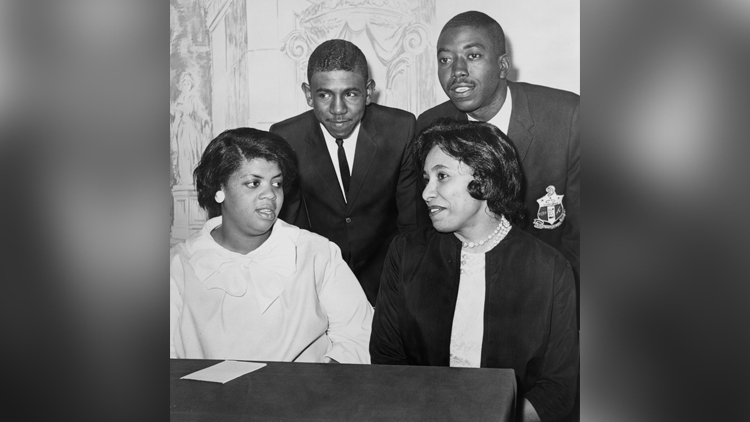
Do you know the term “separate but equal”? Until the 1950s, this term was used as an excuse to segregate [separate] people by race. At that time, Black people did not have the same rights as White people. Many facilities were separated for use by Black people or White people. Even schools were segregated!
Many courts agreed that “separate but equal” was legal. There were some exceptions. In 1885, a California court ruled that schools could not keep out Chinese immigrants. In 1947, a court made segregation against Mexican American students illegal. People who wanted to end “separate but equal” challenged it in courts.

Things changed when the family of Linda Brown sued [took legal action] the Topeka Board of Education. This case was called Brown v. Board of Education. Linda had to walk six blocks to get to the bus stop to go to school. It was a dangerous walk. She had to cross railways. She trudged through rain and snow. The Browns tried to get her into a school that was closer to home. That school was only for White children. They decided to ask the courts to desegregate [end segregation in] schools. With help from the National Association for the Advancement of Colored People (NAACP), they brought the case to court. The federal court didn’t find the case in the Browns’ favor though.

Never giving up, the Browns and the NAACP found other people with similar cases. They went to the United States Supreme Court. The Supreme Court decided in 1954 that schools should not be segregated. They said that separate was not equal. This victory led the way for other civil rights movements. Over time, schools across the country desegregated, and children went to the schools they were closest to. Some places did not like that, but now that it was the law, police and even the army could step in and protect Black children’s right to go to the same schools.
What Do You Think? When people are treated unfairly, what can they do to help change things?
Photo Credit: [top]Library of Congress, Prints & Photographs Division, photograph by Carol M. Highsmith [LC-DIG-highsm-67074]; [bottom] Library of Congress Prints and Photographs Division [LC-USZ62-112705]



